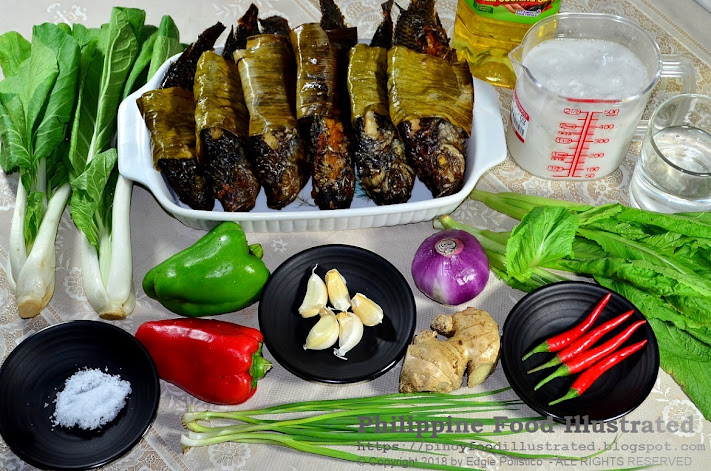On one of my visits to the public market of Cavite City, I found behind the market this small carenderia. Delving over its array of turo-turo dishes, I was attracted to this gatang albacora, obviously because I'm a big fan of dishes with coconut milk. This one is a bit picante (spicy hot).
I delved more into this simple dish and learned from the kusinera (lady cook) that this requires two-step cooking (pinaksiw then ginataan) using fresh fish, freshly squeezed kakang gata, and fresh spices. Sounds simple but pressing - for you have to literally press fresh coconut here. It's a big deal that you have to use a freshly squeezed gata when cooking ginataan. Or else, you will never get that heavenly creamy-licious essence of ginataan. Gata must be there at least an hour before cooking time - the shorter the time, the better. Canned or powdered substitutes cannot satisfy this. It's a blessing if you have a kudkuran (coconut grater) in the kitchen or if your place is nearby a mercado (palengke) or talipapa (informal fish and farmers' market) to get your coconut. In the case of this carenderia, the public market is just right beside their feet. No wonder the smell of gatang albacora is so inviting. The next thing in my mind is a plateful of steaming kanin and an ice-cold soft drink - having both the hot and the cold is the yin and yang of Filipino dining.
I learned from the kusinera that she first cooked the fish ala pinaksiw in pure sukang irok (sugar palm vinegar) with bawang (garlic), luya (ginger), sili (chili), and salt to taste. After a few minutes of boiling the pinaksiw na isda, she added the kakang gata followed by cutlets of siling haba (green finger chili). Pinaksiw is a way of cooking that helped remove the fishy odor of albacora and enhanced the taste of fish.

Adding kakang gata or that thick pure coconut milk adds a creamy and nutty flavor. This is the reason why I cannot resist sipping that white sauce. Good to go also as a topping on my rice.
Each fish is separately wrapped in dahon ng saging (banana leaf) to keep the fish from sticking to the pot and to each other. Plus the leaf is adding aromatic flavor.

This reminds me of my version of Visayan linabog dish, the linabog nga tilapia. The ways of cooking are almost similar only if the albacora here was also fried before adding the kakang gata.
Pass the rice, please.
albacora /al-ba-ko-ra/ Tagalog and Caviteño sea fish /seafood) (also spelled as albakora in Tagalog) [n.] albacore (sc.name: Thunnus alalunga) is a species of tuna with unusually long pectoral fins which include some species of yellow fin tuna in temperate and tropical waters across the globe, particularly in the Pacific, Atlantic, and Indian oceans, and in the seas around them. Known also as “longfined tuna” in Hawaii, and “longfin tuna” in Canada, Australia, and South Africa.
Related posts:
All photos by Edgie Polistico in this blog are copyrighted. ALL RIGHTS RESERVED.
If you liked this post, share it.
Let us know your opinion on the subject. Feel free to comment in the comment section, below. It is important for us to know what you think.
Tell us what other topics you would like us to write, share, and discuss.
Continue to follow my blogs. You can also follow and learn more by joining us in our Facebook group. Have more bits and pieces about our kind of food, ingredients, and ways of cooking, dining, and knowing food culture across the 7,641 islands of the Philippines. I will search for more and continue to share my findings. It is my pleasure to rediscover the known and least known things or the unheard ones and put them here for everyone to find, learn, and treasure.
Encouragement and enthusiasm are not enough. I also need moral support, prayers, and anything else that can uplift my spirit and keep my good reasons. Keep them coming. All I know is that I am happy with what I am sharing and giving away. If you are pleased and happy with what I am doing, just smile and please share the happiness. Keep sharing and include to share the PHILIPPINE FOOD ILLUSTRATED. I feel energized when my blog becomes one of the reasons why you are happy and smiling.
Edgie Polistico
For more about Filipino food, see this Philippine Food, Cooking, and Dining Dictionary. It is OPEN and FREE.





























